Human Orbital Spaceflights
![]()
International Flight No. 300Soyuz TMA-18MEridanusRussia |
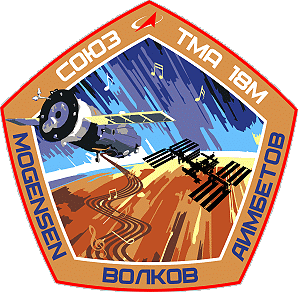 |
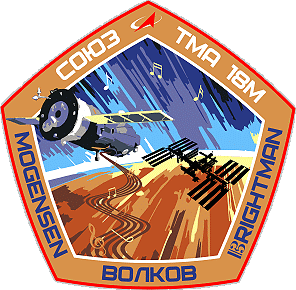 |
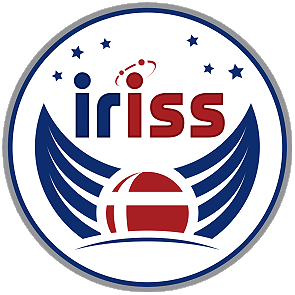 |
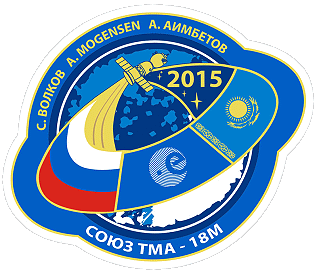 |
|
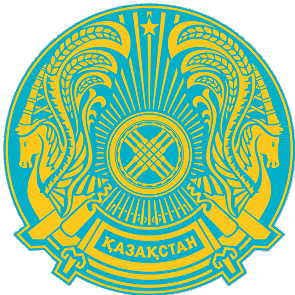 |
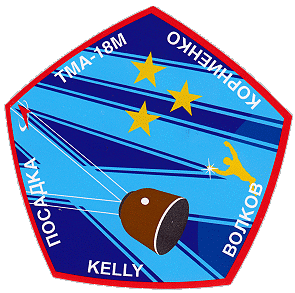 |
|
![]()
Launch, orbit and landing data
walkout photo |
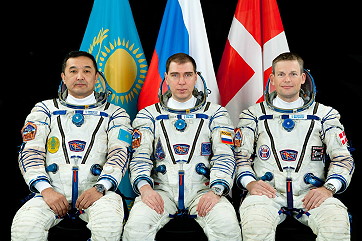 |
|||||||||||||||||||||||
alternative crew photo |
alternative crew photo |
|||||||||||||||||||||||
alternative crew photo |
alternative crew photo |
|||||||||||||||||||||||
alternative crew photo |
alternative crew photo |
|||||||||||||||||||||||
Crew
| No. | Surname | Given names | Position | Flight No. | Duration | Orbits | |
| 1 | Volkov | Sergei Aleksandrovich | Commander | 3 | 181d 23h 48m 07s | 2833 | |
| 2 | Mogensen | Andreas Enevold | Flight Engineer | 1 | 9d 20h 13m 47s | 156 | |
| 3 | Aimbetov | Aydyn Akanovich | Flight Engineer | 1 | 9d 20h 13m 47s | 156 |
Crew seating arrangement
|
 |
|
||||||||||||||||
Backup Crew
|
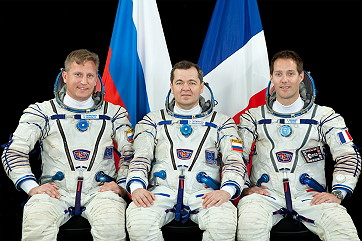 |
||||||||||||||||||||
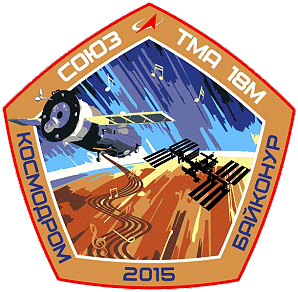 |
alternative crew photoalternative crew photooriginal crew photo |
||||||||||||||||||||
Hardware
| Launch vehicle: | Soyuz-FG (No. 26M136S G15000-054) |
| Spacecraft: | Soyuz TMA-18M (TMA-M No. 718) |
Flight
|
Launch from the Baikonur Cosmodrome. ISS Expedition
45 /
46 (only Sergei
Volkov). Landing 157 km southeast of Dzheskasgan. Originally it was planned to fly Sarah Brightman as Spaceflight Participant but on May 13, 2015 she announced that she dropped down the training. Following a two-day solo flight Soyuz TMA-18M docked to ISS on September 04, 2015. Sergei Volkov became member of the next resident crew (Expedition 45) (together with Scott Kelly, Mikhail Korniyenko, Oleg Kononenko, Kimiya Yui and Kjell Lindgren, while Andreas Mogensen and Aydyn Aimbetov are set to return with Soyuz TMA-16M. The longer approach rather than the expedited four-orbit, six-hour approach comes as a result of the space station having performed a debris avoidance maneuver in August 2015. The outpost's current altitude is not conducive to the same day arrival. The Soyuz spacecraft is composed of three elements attached end-to-end - the Orbital Module, the Descent Module and the Instrumentation/Propulsion Module. The crew occupied the central element, the Descent Module. The other two modules are jettisoned prior to re-entry. They burn up in the atmosphere, so only the Descent Module returned to Earth. The deorbit burn lasted 280 seconds. Having shed two-thirds of its mass, the Soyuz reached Entry Interface - a point 400,000 feet (121.9 kilometers) above the Earth, where friction due to the thickening atmosphere began to heat its outer surfaces. With only 23 minutes left before it lands on the grassy plains of central Asia, attention in the module turned to slowing its rate of descent. Eight minutes later, the spacecraft was streaking through the sky at a rate of 755 feet (230 meters) per second. Before it touched down, its speed slowed to only 5 feet (1.5 meter) per second, and it lands at an even lower speed than that. Several onboard features ensure that the vehicle and crew land safely and in relative comfort. Four parachutes, deployed 15 minutes before landing, dramatically slowed the vehicle's rate of descent. Two pilot parachutes were the first to be released, and a drogue chute attached to the second one followed immediately after. The drogue, measuring 24 square meters (258 square feet) in area, slowed the rate of descent from 755 feet (230 meters) per second to 262 feet (80 meters) per second. The main parachute was the last to emerge. It is the largest chute, with a surface area of 10,764 square feet (1,000 square meters). Its harnesses shifted the vehicle's attitude to a 30-degree angle relative to the ground, dissipating heat, and then shifted it again to a straight vertical descent prior to landing. The main chute slowed the Soyuz to a descent rate of only 24 feet (7.3 meters) per second, which is still too fast for a comfortable landing. One second before touchdown, two sets of three small engines on the bottom of the vehicle fired, slowing the vehicle to soften the landing. |
Note
|
Andreas
Mogensen and Aydyn
Aimbetov landed on September 12, 2015 at 00:51:30.1
UTC with Soyuz TMA-16M spacecraft. |
Graphics / Photos
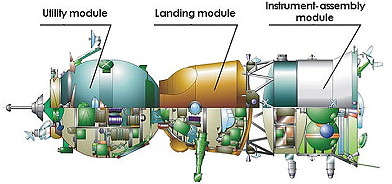 |
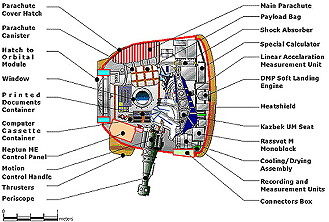 |
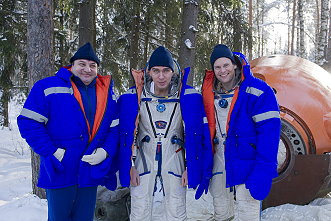 |
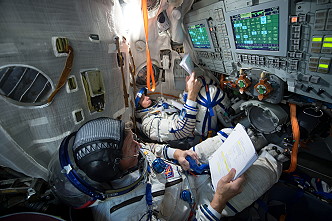 |
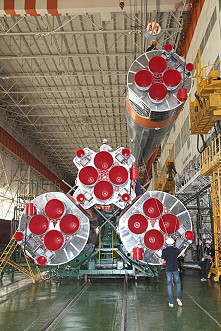 |
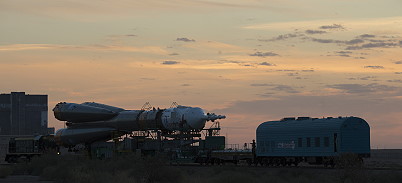 |
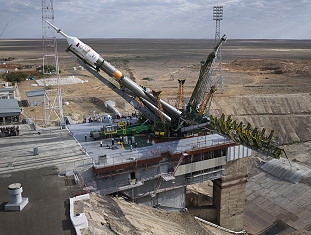 |
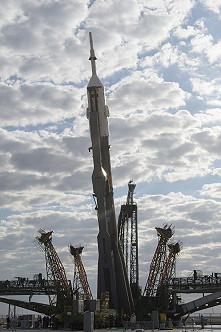 |
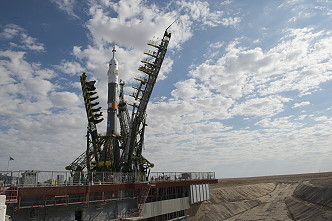 |
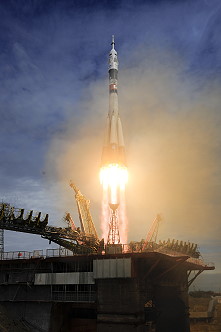 |
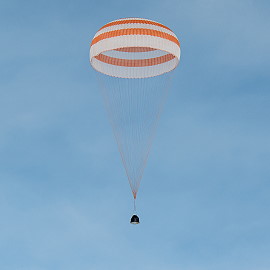 |
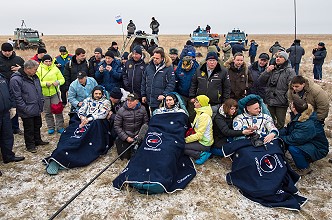 |
| © |  |
Last update on August 20, 2025.  |
 |